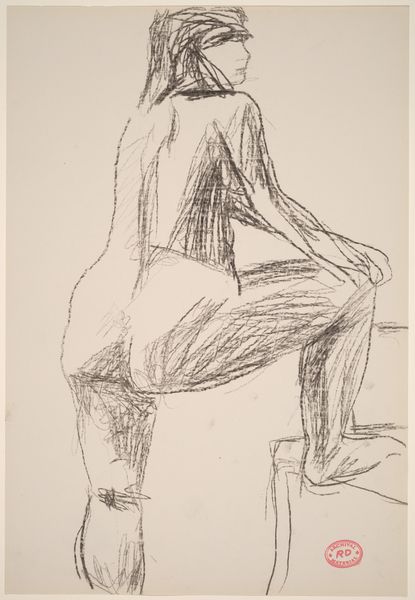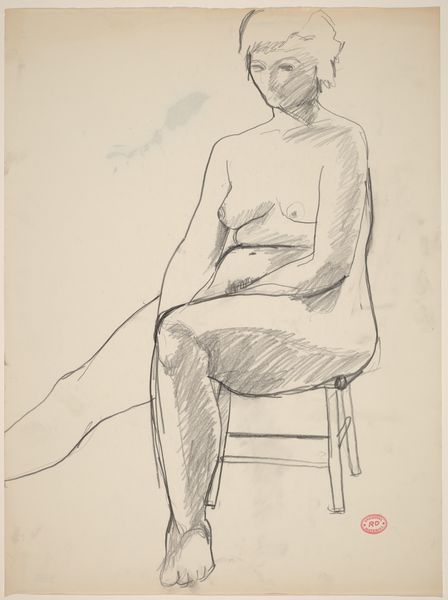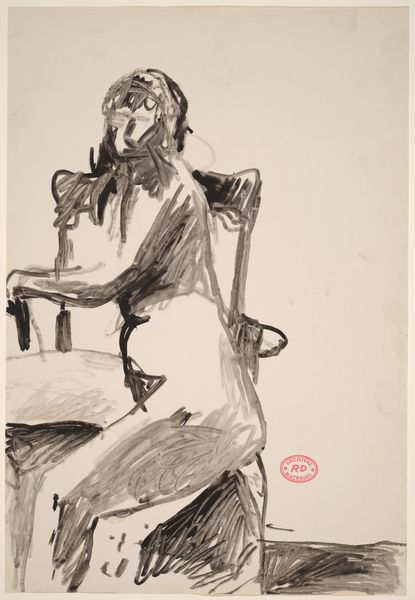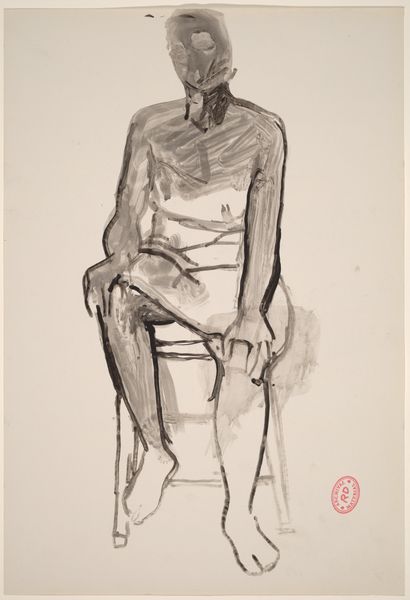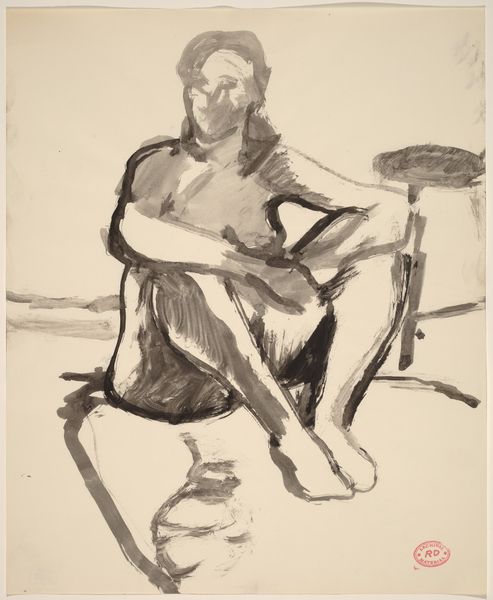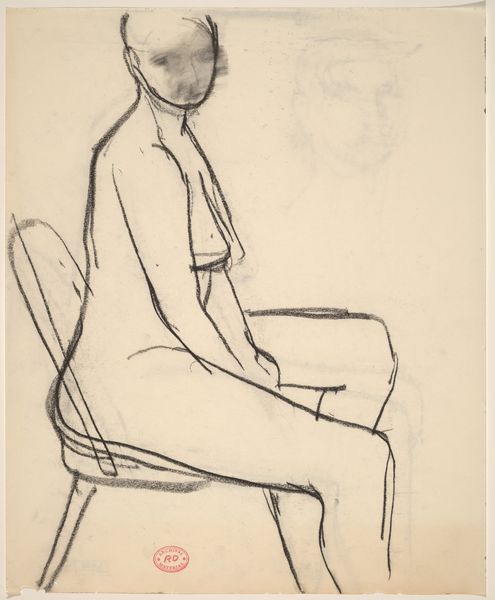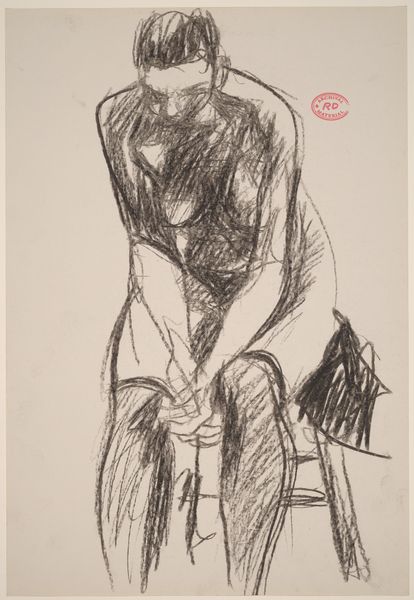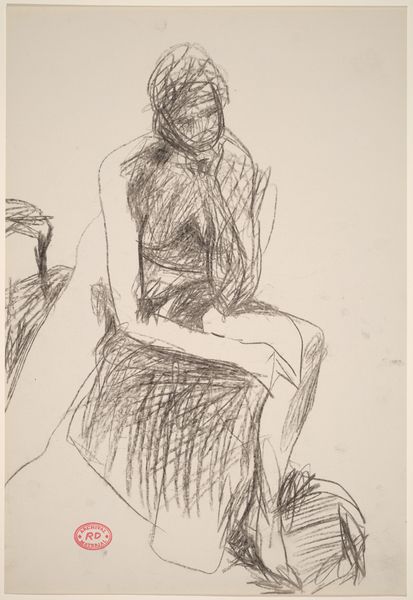![Untitled [nude seated in an armchair reading a book] by Richard Diebenkorn](/_next/image?url=https%3A%2F%2Fd2w8kbdekdi1gv.cloudfront.net%2FeyJidWNrZXQiOiAiYXJ0ZXJhLWltYWdlcy1idWNrZXQiLCAia2V5IjogImFydHdvcmtzL2Y5ZGI1MGViLTBhZTYtNDA2MC1iNjg2LTRiNzE1NzgzYjI1Yi9mOWRiNTBlYi0wYWU2LTQwNjAtYjY4Ni00YjcxNTc4M2IyNWJfZnVsbC5qcGciLCAiZWRpdHMiOiB7InJlc2l6ZSI6IHsid2lkdGgiOiAxOTIwLCAiaGVpZ2h0IjogMTkyMCwgImZpdCI6ICJpbnNpZGUifX19&w=3840&q=75)
Untitled [nude seated in an armchair reading a book] 1955 - 1967
0:00
0:00
drawing, pencil
#
portrait
#
drawing
#
figuration
#
bay-area-figurative-movement
#
pencil
#
nude
Dimensions: overall: 30.2 x 22.9 cm (11 7/8 x 9 in.)
Copyright: National Gallery of Art: CC0 1.0
Curator: Here we have Richard Diebenkorn’s "Untitled [nude seated in an armchair reading a book]", a pencil drawing dating from somewhere between 1955 and 1967. What’s your initial impression? Editor: Brooding. Melancholy. There's something very private and almost hidden in that downward gaze. It feels less about objectifying the nude form and more about introspection. Curator: Absolutely. Given Diebenkorn's trajectory, particularly his shift toward figuration in the mid-1950s, it is intriguing how the line work remains so gestural, almost like a study. Note the texture of the paper, you can see how much erasure and reworking occurred during the process. He wasn’t seeking photographic accuracy here; he was feeling out form. Editor: I find the obscured face striking. What is typically a key element of portraiture is rendered almost illegible. And then there is the book - an object typically associated with enlightenment. Does that symbol provide a clue into the inner life represented here, or serve as an intentional misdirection? Curator: That tension you're noting is central to understanding this work. The materiality also challenges conventional academic nudes. This wasn’t an exercise in achieving flawless lines. It looks immediate, worked on—and the subject is casually seated, a moment taken from daily life and reproduced with only paper and pencil. Editor: The chair itself seems to suggest something too, maybe a societal construct, like imposed boundaries of space in which her personal reflections reside? The way it encases her also contrasts so strongly with her nudity which typically alludes to ideas of freedom, liberation, honesty... Curator: Good observation. He even allows elements to simply fade away unfinished— the background, for example. Editor: Considering its likely context amidst the burgeoning Abstract Expressionist scene, I can see him finding something substantial by engaging both the figure and the idea of "drawing," of laying down a representational act rather than something more grandiose or gestural, right? It returns meaning to the simple act of image creation. Curator: Precisely. Diebenkorn, by utilizing simple materials, brought figure representation back into conversation with materiality and the immediate creative act. What a testament to the beauty in these simple markings of human perception. Editor: Indeed, an eloquent observation and I now agree it presents more than a study on an artist's skills; I would even go as far to claim it's a study on all of us, presented with intimacy and sensitivity by means of form and light.
Comments
No comments
Be the first to comment and join the conversation on the ultimate creative platform.

